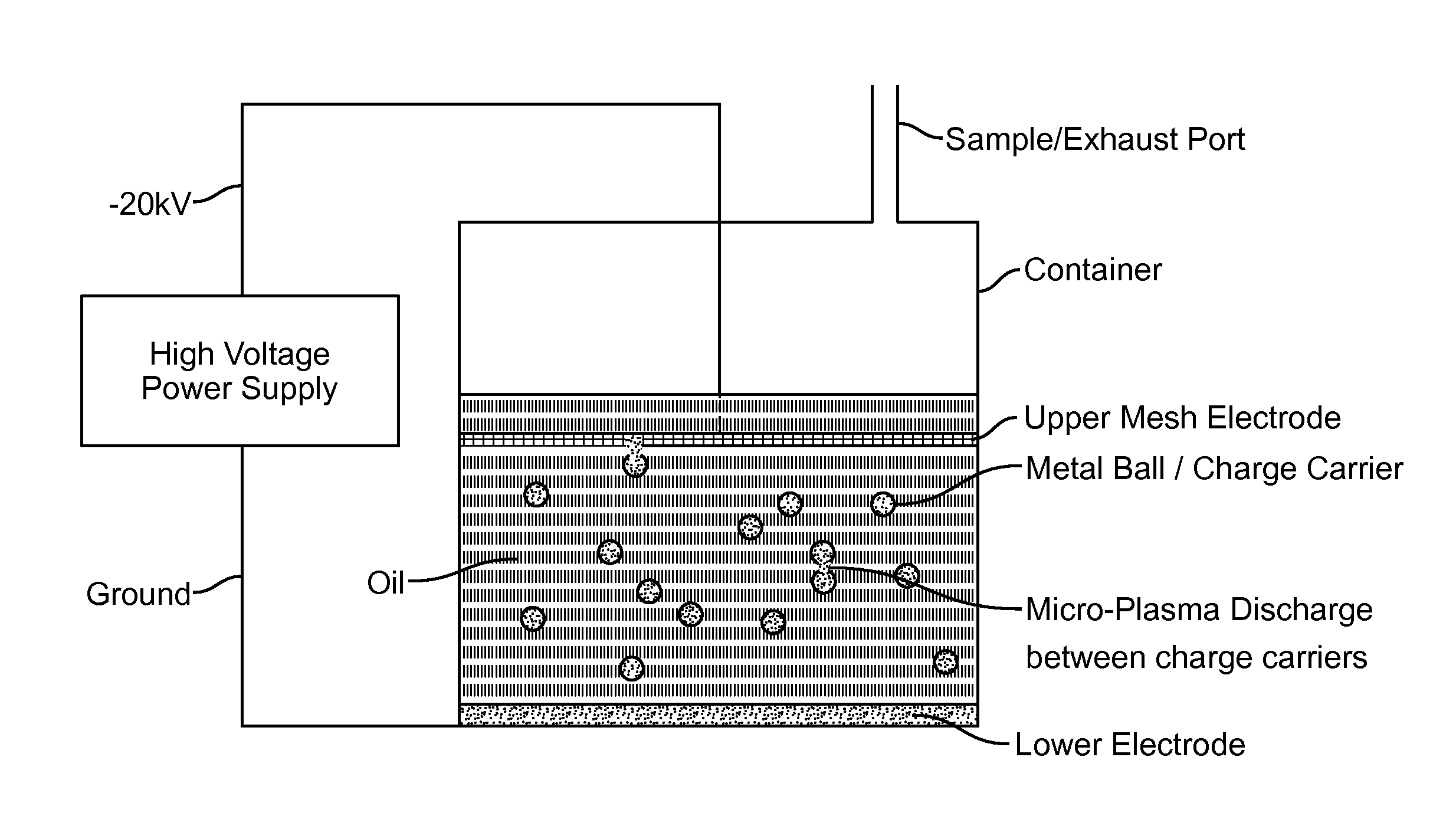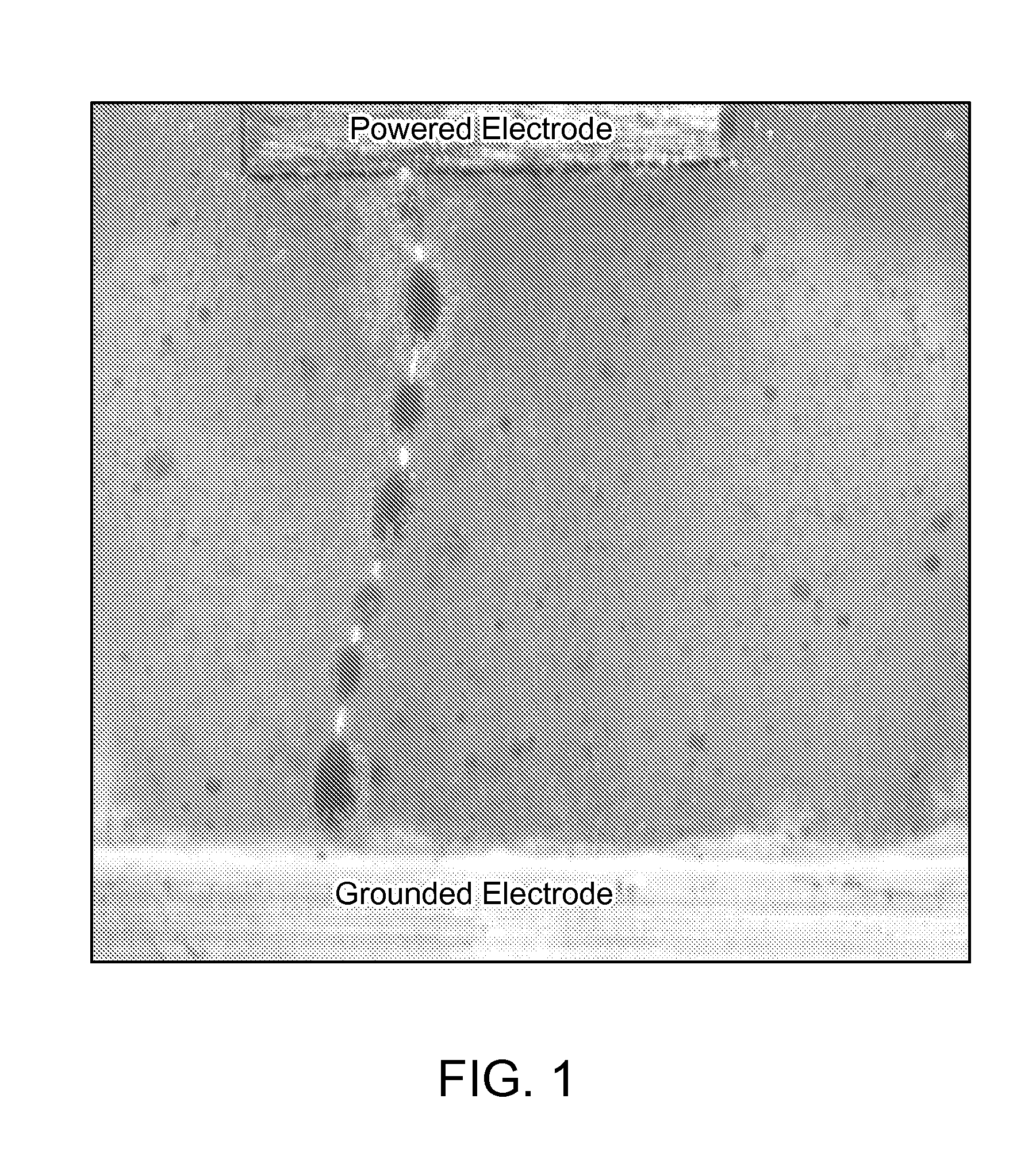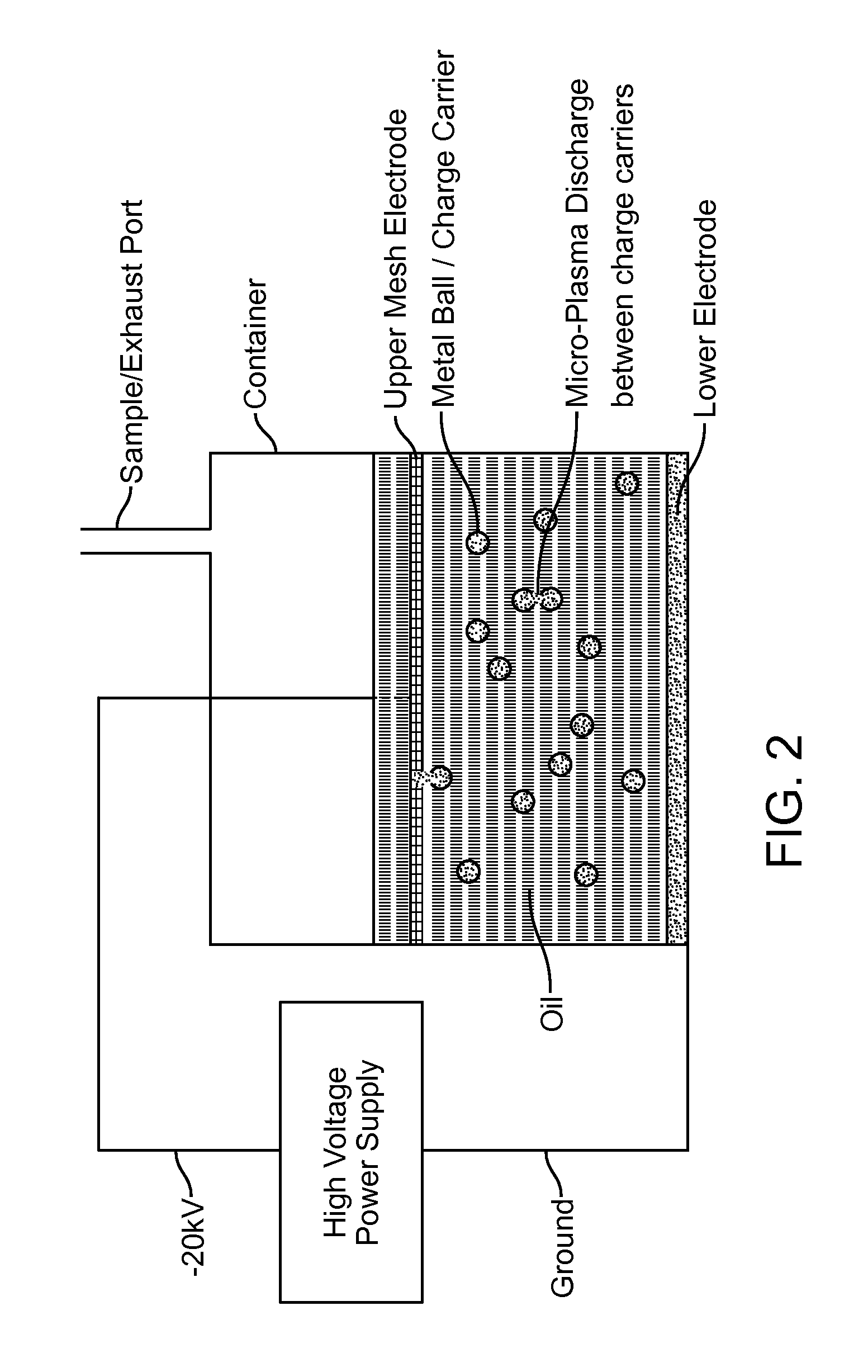Processing of Dielectric Fluids with Mobile Charge Carriers
a technology of dielectric fluid and mobile charge carrier, which is applied in the direction of hydrocarbon oil cracking process, fuel, energy-based chemical/physical/physicochemical process, etc., can solve the problems of difficult transportation, inability to process in conventional refineries, and lack of workable understanding in the prior ar
- Summary
- Abstract
- Description
- Claims
- Application Information
AI Technical Summary
Benefits of technology
Problems solved by technology
Method used
Image
Examples
example 1
[0036]Experiments were performed on the treatment of a Boscan crude oil with a plasma discharge in the liquid to reduce the viscosity of the oil. The Boscan crude was mixed with mineral oil in crude to mineral oil mass fractions of approximately 70% and 30% respectively. Treatments consisting of total input energies in the range of 0 to 20 kJ were performed. Viscosity was measured on treated and untreated samples using a TA instruments AR-2000 rheometer. A portion (3-4 mL) of the sample of the total sample (˜25 mL) was removed from the mixture for the viscosity measurement. Both treated and untreated samples were subjected to chemical analysis. The results are shown below.
SUMMARY OF RESULTS
[0037]The Boscan crude was mixed with mineral oil as a diluting agent to reduce the viscosity during treatment and also as a relatively low cost saturated hydrocarbon mixture that can serve as a hydrogen donor. The mixture was approximately a 70% / 30% mass ratio (later sim-dist analysis indicates i...
example 2
[0040]Experiments were performed on the treatment of JP8, (military diesel fuel) with a bouncing ball, mobile charge carrier, micro-plasma discharge reactor. The gases produced by the reactor were collected and analyzed using gas chromatography (GC). Two different reactor discharge settings were used; case 1: operating at 0.03 mJ / ball-discharge-pulse, and case 2: operating at 0.09 mJ / ball-discharge-pulse. These energies per pulse were controlled by changing the applied voltage to the electrodes, but the same change could also be affected by changing the size of the balls. Table 2 show a analysis of the GC traces of the helium ionization detector (HID) attained for gas sampled from the reactor at the low voltage (low energy per pulse) and high voltage (high energy per pulse) operating conditions. Identified hydrocarbon peaks are labeled 1-8. Using a calibration standard the peaks are identified as 1: hydrogen, 2: methane, 3: overlapping acetylene and ethylene, and 4: ethane. Peaks 5 ...
PUM
 Login to View More
Login to View More Abstract
Description
Claims
Application Information
 Login to View More
Login to View More - R&D
- Intellectual Property
- Life Sciences
- Materials
- Tech Scout
- Unparalleled Data Quality
- Higher Quality Content
- 60% Fewer Hallucinations
Browse by: Latest US Patents, China's latest patents, Technical Efficacy Thesaurus, Application Domain, Technology Topic, Popular Technical Reports.
© 2025 PatSnap. All rights reserved.Legal|Privacy policy|Modern Slavery Act Transparency Statement|Sitemap|About US| Contact US: help@patsnap.com



